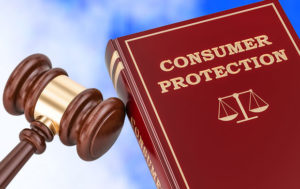
Sloth can be a deadly sin, or at least a potentially litigious one, and the rise of blogging on the Internet has peaked concern about this pitfall.
The issue arises because bloggers, many or most of them amateurs, often overdose on cut-and-paste editing, which can result in copyright violations, Paul Llewellyn, an attorney with Kaye Scholer in New York City, explained.
“A blogger might cut and paste a section of copyrighted material on the Internet and post it as context for their comments,” he told the E-Commerce Times. “There’s potential copyright issues when you do things like that,” Scholer warned.
What’s Fair Use?
There’s also the consideration of “fair use,” which allows portions of copyrighted material to be reproduced without the copyright holder’s permission, added Llewellyn’s colleague, Thomas Smart, who is co-chair of the intellectual property and patent litigation group at Kaye Scholer. However, to claim fair use, one must meet the standards.
Smart explained that the courts ask four questions to determine if someone is making fair use of copyrighted material:
- What is the nature or purpose of the use? “Commentary or adding your ideas to someone else’s ideas or literary criticism are more favored than just copying for purposes of passing it on to someone or reselling it,” he said.
- What is the nature of the work being copied? “A work of fiction is entitled to more protection than the daily weather chart in the newspaper,” he explained. “The higher the degree of creativity in a work, the more entitled it is to protection.”
- How much of the work was copied? “If you take an entire article from The Wall Street Journal or Newsweek and recapitulate the whole thing, that’s more problematic than if you take a couple of quotes from it,” he observed.
- How did the copying affect the market for the copyrighted work?
Tricky Predictions
Making predictions based on those rules can be very tricky and depends very much on the circumstances of each case, Smart warned.
“Bloggers, because they probably don’t have legal counsel and often operate on their own, are more likely to copy more than probably is permitted,” he said.
Misconceptions of Internet users also play a role in perpetrating copyright infringement on the Web — especially the idea that because something is on the Net, real-world rules don’t apply to it.
“The normal rules of copyright apply to a blog,” Smart said. “A blog is just another medium in which people write.”
Engorging Public Domain
Patrick Deese, a Web site designer and promoter based in Mexico, told the E-Commerce Times he sees his copyrighted material filched by websters all the time. He recalled the reaction of one image reaver when he confronted her about her thievery. “She said that ‘as far as I’m concerned, all pictures on the Internet are in the public domain,'” he recollected. “I told her that that was an interesting opinion, however, I wouldn’t recommend you trying to test that theory in court.”
While some forms of copyright infringement, like cutting and pasting text or images into a blog, can be obvious, other forms, like hotlinking, can be less so.
Hotlinking — unlike hyperlinking, where you click on a link on one Web page and are taken to another — creates a link from the content of one Web page to another.
For instance, if a blogger is doing an item on John Kerry, he might copy the URL of a copyrighted photo of the senator at a news site like Boston.com and paste it into a blog entry as an image reference. When that entry appears in a browser, so will the image of the Massachusetts solon.
Hot Issue
“No one’s talking about it, but it’s a pretty hot issue,” Mike Elgan, a California-based technology writer and editor, said of hotlinking.
“The practice of copying pictures is unbelievably widespread,” he told the E-Commerce Times. “It probably happens 500 times a second.”
“If there’s a hot picture of some kind,” he continued, “that picture will be duplicated 10,000 times in a couple of days on Web sites all over the world and nobody stops to think who’s the owner, is it stealing, any of that stuff.”
Bandwidth Theft
Elgan was embroiled in a hotlinking controversy of his own when he hotlinked his blog to an image at Deese’s blog.
“I noticed that a site was using my image on their page but using my Web server to host it,” Deese explained.
“The image was only a screen capture so using it wasn’t a big deal, but it was churning up a lot of bandwidth because he syndicates his articles on a lot of other sites,” he said. “I was getting 500 hits a day on that image and that adds up after awhile.”
Elgan defended his action by saying that he wanted to leave the content in the control of the copyright holder. “That person can delete it, alter it or remove it,” he noted.
While bandwidth concerns are genuine, traffic problems are inescapable on the Internet, he argued. “You can put something up and maybe five people will look at it, maybe 5 million people will look at it,” he said. “That’s the nature of the Internet.”
This story was originally published on August 4, 2005, and is brought to you today as part of our Best of ECT News series.





















































